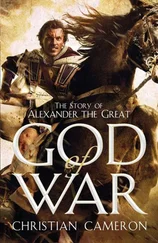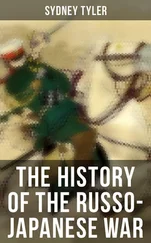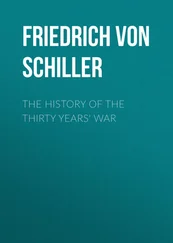Christopher Tyerman - God's War - A New History of the Crusades
Здесь есть возможность читать онлайн «Christopher Tyerman - God's War - A New History of the Crusades» весь текст электронной книги совершенно бесплатно (целиком полную версию без сокращений). В некоторых случаях можно слушать аудио, скачать через торрент в формате fb2 и присутствует краткое содержание. Жанр: Старинная литература, на английском языке. Описание произведения, (предисловие) а так же отзывы посетителей доступны на портале библиотеки ЛибКат.
- Название:God's War: A New History of the Crusades
- Автор:
- Жанр:
- Год:неизвестен
- ISBN:нет данных
- Рейтинг книги:5 / 5. Голосов: 1
-
Избранное:Добавить в избранное
- Отзывы:
-
Ваша оценка:
God's War: A New History of the Crusades: краткое содержание, описание и аннотация
Предлагаем к чтению аннотацию, описание, краткое содержание или предисловие (зависит от того, что написал сам автор книги «God's War: A New History of the Crusades»). Если вы не нашли необходимую информацию о книге — напишите в комментариях, мы постараемся отыскать её.
The result is a stunning reinterpretation of the Crusades, revealed as both bloody political acts and a manifestation of a growing Christian communal identity. Tyerman uncovers a system of belief bound by aggression, paranoia, and wishful thinking, and a culture founded on war as an expression of worship, social discipline, and Christian charity.
This astonishing historical narrative is imbued with figures that have become legends--Saladin, Richard the Lionheart, Philip Augustus. But Tyerman also delves beyond these leaders to examine the thousands and thousands of Christian men--from Knights Templars to mercenaries to peasants--who, in the name of their Savior, abandoned their homes to conquer distant and alien lands, as well as the countless people who defended their soil and eventually turned these invaders back. With bold analysis, Tyerman explicates the contradictory mix of genuine piety, military ferocity, and plain greed that motivated generations of Crusaders. He also offers unique insight into the maturation of a militant Christianity that defined Europe's identity and that has forever influenced the cyclical antagonisms between the Christian and Muslim worlds.
Drawing on all of the most recent scholarship, and told with great verve and authority,
is the definitive account of a fascinating and horrifying story that continues to haunt our contemporary world.
From Publishers Weekly
This is likely to replace Steven Runciman's 50-year-old
as the standard work. Tyerman (
), lecturer in medieval history at Oxford University, demolishes our simplistic misconceptions about that series of ferocious campaigns in the Middle East, Muslim Spain and the pagan Baltic between 1096 and 1500. Abjuring sentimentality and avoiding clichés about a rapacious West and an innocent East, Tyerman focuses on the crusades' very human paradoxes: "the inspirational idealism; utopianism armed with myopia; the elaborate, sincere intolerance; the diversity and complexity of motive and performance." The reader marvels at the crusaders' inextinguishable devotion to Christ even while shuddering at their delight in massacring those who did not share that devotion. In the end, Tyerman says, what killed crusading was neither a lack of soldierly enthusiasm nor its failure to retain control of Jerusalem, but the loss of Church control over civil societies at home and secular authorities who felt that religion was not sufficient cause for war and that diplomacy was a more rational method of deciding international relations.
is that very rare thing: a readable and vivid history written with the support of a formidable scholarly background, and it deserves to reach a wide audience. 16 color illus.
Review
Christopher Tyerman has crafted a superb book whose majestic architecture compares with Runciman's classic study of the Crusades…He is an entertaining as well as reliable guide to the bizarre centuries-long episode in which Western Christianity willfully ignored its Master's principles of love and forgiveness.
--Diarmaid MacCulloch, author of This is a magisterial work. In
, the Crusades are not just emblematic episodes in a troubled history of Europe's encounter with Islam. Tyerman shows that they are, with all their contradictions—tragedy and tomfoolery, idealism and cynicism, piety and savagery—fundamentally and inescapably human.
--Paul M. Cobb, Associate Professor of Islamic History, Fellow of the Medieval Institute, University of Notre Dame
Tyerman's wonderful book is contemporary medieval history-writing at the top of its game. It is also the finest history of the Crusades that anyone has ever written, fully informed by its predecessors and by the excellent scholarship of the past half century. Trenchantly written on the grand scale and full of vivid detail, clear argument, and sharp judgment,
shows how the entire apparatus of crusade became tightly woven into European institutional and social life and consciousness, offering a highly original perspective on all of early European history and on European relations with non-Europeans. It shows no patience with ignorant mythologizing, modern condescension, or cultural instrumentalism.. In short, it constitutes a crusade history for the twenty-first century—and just in time.
--Edward M. Peters, Henry Charles Lea Professor of History, University of Pennsylvania
At a time when interest in the Middle East and the Crusades has reached a new height, Christopher Tyerman has made a significant contribution to the ever-growing shelves of books devoted to this subject. Tyerman's well-written book focuses heavily on the development of ideas about holy war from antiquity onward and on the crusade to the East from the eleventh to the sixteenth century. It is based on a careful reading of both primary and secondary sources and will prove an important resource for a broad audience of scholars, students, and general readers. The comparison with Runciman's history leaps out from the pages of this large volume and the temptation to address it will no doubt seduce others, but this volume is Tyerman through and through.
--James M. Powell, Professor Emeritus of Medieval History, Syracuse University
This is likely to replace Steven Runciman's 50-year-old
as the standard work. Tyerman, lecturer in medieval history at Oxford University, demolishes our simplistic misconceptions about that series of ferocious campaigns in the Middle East, Muslim Spain and the pagan Baltic between 1096 and 1500...
is that very rare thing: a readable and vivid history written with the support of a formidable scholarly background, and it deserves to reach a wide audience.
Challenging traditional conceptions of the Crusades, e.g., the failure to retain Jerusalem, Tyerman believes that it was the weakening of papal power and the rise of secular governments in Europe that finally doomed the crusading impulse. This is a marvelously conceived, written, and supported book.
--Robert J. Andrews












